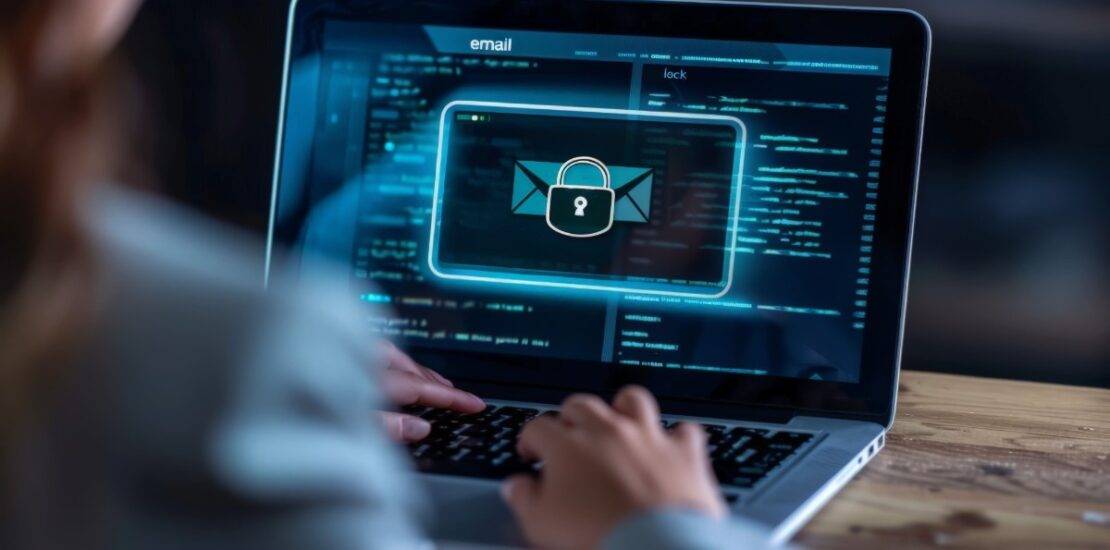Cyberattacks are no longer a matter of
if but when. For modern businesses, two often-overlooked defenses, secure code review and email encryption, can dramatically reduce exposure to costly breaches. Together, they strengthen the enterprise security posture across both development pipelines and daily communications.
The Two Overlooked Controls That Block Real Attacks
Most enterprises invest heavily in firewalls, endpoint detection, and monitoring. Yet, statistics show that:
- Nearly 74% of organizations have experienced breaches traced back to insecure code.
- Over 90% of successful phishing campaigns still exploit unencrypted or poorly secured emails.
Both vulnerabilities are preventable through disciplined code review practices and enterprise-wide email encryption policies. Let’s explore how.
Secure Code Review: Objectives, Scope, and Workflow
What Is Secure Code Review?
Secure code review is the structured process of examining source code to identify logic flaws, vulnerabilities, and compliance risks before they reach production. Unlike general QA, the focus is on security by design.
Objectives
- Catch vulnerabilities early, buffer overflows, injection risks, and insecure dependencies.
- Enforce secure coding standards (e.g., OWASP, ISO/IEC 27034).
- Reduce long-term remediation costs.
- Build developer awareness and accountability.
The Workflow
- Define Scope – Prioritize high-risk modules (authentication, payment, API endpoints).
- Assign Roles (RACI) – Developers, peer reviewers, security engineers.
- Use a Hybrid Approach – Combine manual review with automated SAST/DAST tools and AI-assisted scanning.
- Review Checklist –
- Input validation & sanitization
- Authentication & session management
- Access control enforcement
- Error handling & logging
- Cryptographic practices
- Document Findings – Track issues with severity ratings and SLAs for remediation.
Benefits of Code Review in Security
- Prevents exploitable vulnerabilities before deployment.
- Supports compliance (PCI DSS, HIPAA, GDPR).
- Encourages knowledge sharing within development teams.
Reviewer Checklist (OWASP-Aligned)
| Security Area |
Key Questions |
| Input Validation |
Are all inputs sanitized before processing? |
| Authentication |
Are passwords hashed with strong algorithms? |
| Session Management |
Is session expiration enforced securely? |
| Error Handling |
Do error messages avoid leaking system details? |
| Cryptography |
Is encryption used for sensitive data at rest and in transit? |
| Logging & Monitoring |
Are logs sanitized, monitored, and protected from tampering? |
Email Encryption in the Enterprise: S/MIME vs PGP vs TLS
Why Email Encryption Matters
Even with endpoint protections, email remains the #1 attack vector for credential theft, data leakage, and compliance violations. Encryption ensures that sensitive communications remain confidential and tamper-proof.
Methods
- S/MIME (Secure/Multipurpose Internet Mail Extensions)
- Enterprise-friendly, integrates with Outlook/Exchange.
- Uses digital certificates for authentication.
- PGP (Pretty Good Privacy)
- Favored for flexible, decentralized key management.
- Strong end-to-end protection across diverse email clients.
- TLS (Transport Layer Security)
- Secures communication between mail servers.
- Less robust than S/MIME/PGP but essential as a baseline.
Email Encryption Best Practices for Enterprises
- Enforce mandatory encryption for emails containing PII, PHI, financial records, or contracts.
- Provide user training to prevent accidental misconfiguration.
- Automate encryption via policy-based gateways.
- Maintain certificate/key lifecycle management with clear renewal policies.
Policy Matrix: What Must Be Encrypted by Default?
| Email Content Type |
Encryption Required? |
Recommended Method |
| Customer PII (IDs, addresses) |
Yes |
S/MIME or PGP |
| Financial Data (invoices, payroll) |
Yes |
S/MIME |
| Healthcare/PHI |
Yes |
S/MIME (HIPAA) |
| Source Code & Credentials |
Yes |
PGP |
| Internal Memos (non-sensitive) |
Optional |
TLS |
Bringing Them Together: Release Gates + Encrypted Communications
- Before Deployment: Code review gates in CI/CD pipelines ensure insecure modules don’t pass.
- After Deployment: Encryption ensures keys, logs, and customer communications stay protected.
- Compliance Coverage:
- PCI DSS: Secure coding practices + encrypted cardholder data.
- HIPAA: Encryption of patient communications.
- GDPR: Data protection by design & secure transfers.
30-Day Rollout Plan
Week 1: Define scope & draft secure code review SOP.
Week 2: Train developers on the checklist + integrate automated scanning.
Week 3: Implement enterprise email encryption policies (TLS baseline, S/MIME rollout).
Week 4: Audit, refine, and report compliance coverage.
FAQs
- Isn’t automated scanning enough for code review?
No, automated tools catch patterns, but manual review uncovers logic flaws and business logic vulnerabilities.
- Will email encryption slow down users?
With modern integrations, encryption is seamless. Policies can enforce transparent, default encryption for sensitive categories.
- How do these measures reduce breach costs?
Early code review reduces remediation costs by up to 80%; encryption avoids regulatory fines and reputation damage.
Conclusion
Code review and email encryption may seem like basic controls, but when applied rigorously, they close two of the biggest gaps in cyber defense. By embedding secure code review into your development lifecycle and mandating enterprise-wide encryption, you not only protect your systems and data but also build long-term trust with clients and partners.
At CloudsDubai, we help enterprises build practical, compliant, and future-ready cybersecurity strategies. These two measures are the perfect place to start.

